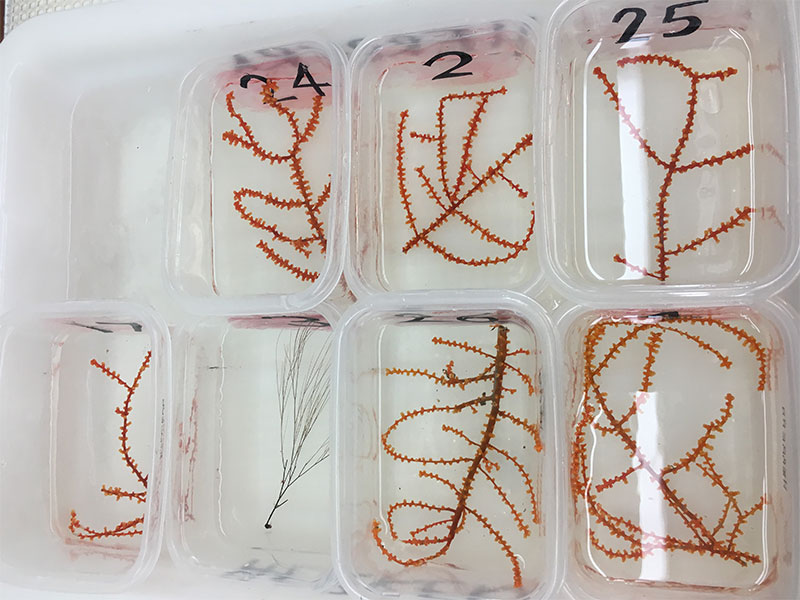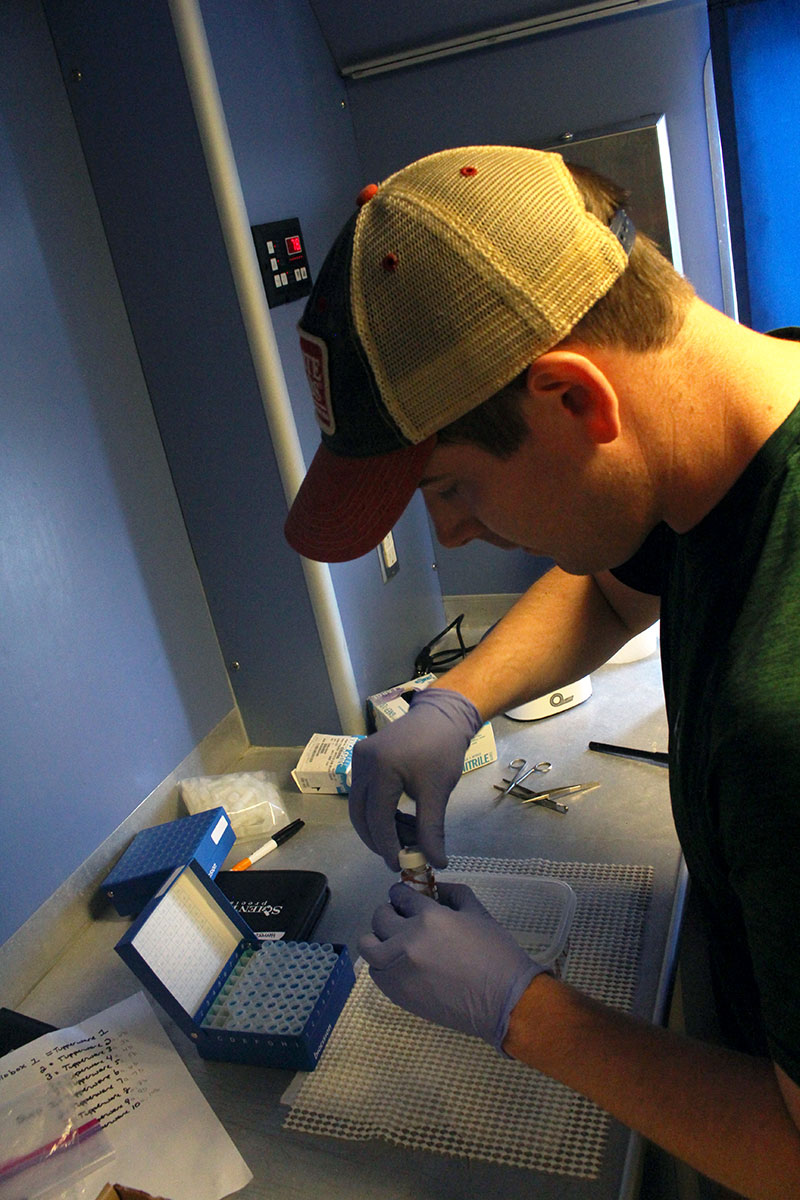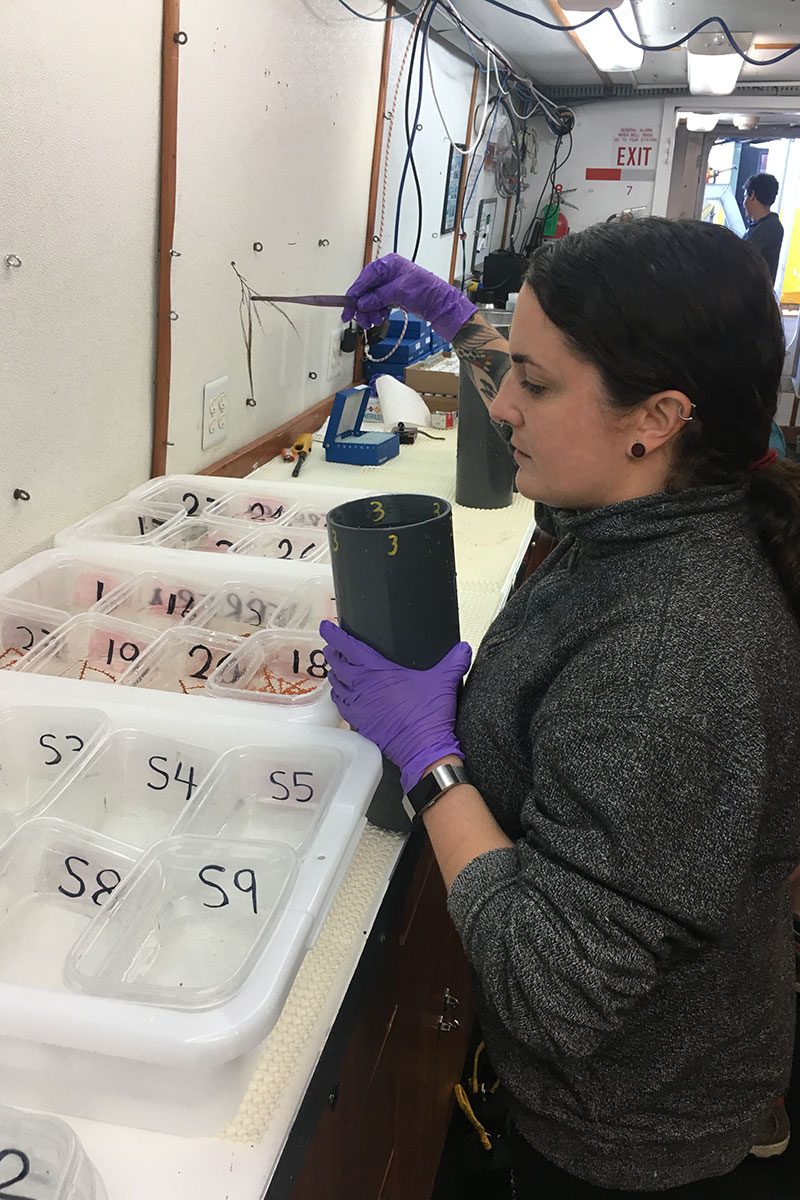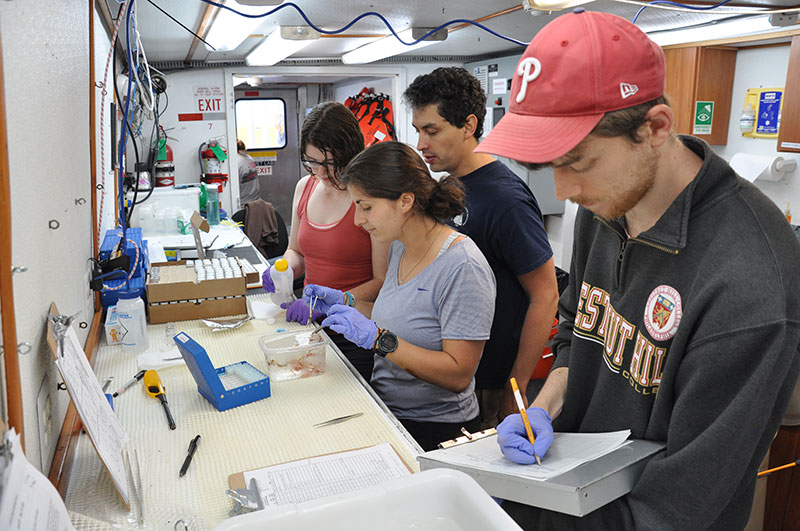
By Matthew Galaska, Postdoctoral Research Associate, Lehigh University
April 29, 2019

Mesophotic corals Swiftia exserta and Antipathes furcata collected by the Global Explorer ROV at Diaphus Bank. The corals will be processed for genetics and stable isotope analyses. Image courtesy of NOAA. Download larger version (jpg, 1.3 MB).
Today, we are going to discuss how we preserve the coral samples we are collecting with the Global Explorer remotely operated vehicle (ROV). These samples will eventually be used to look at the genetic connectivity for our target species between the Flower Garden Banks National Marine Sanctuary and the reefs and banks to its east.
DNA (deoxyribonucleic acid), which carries genetic instructions used by all organisms, begins to degrade as soon as a sample is taken from the coral due to natural cell processes. Thus, it is important for all downstream genetic analyses to minimize the amount of degradation that occurs to the DNA after we take the sample.

Lehigh University postdoctoral researcher, Matt Galaska, preserving coral tissue. Image courtesy of Emma Saso. Download larger version (jpg, 11.5 MB).

NOAA contractor Janessy Frometa processes mesophotic coral samples collected at Diaphus Bank at 90-100 meters (295-328 feet) depth. Samples were collected aboard the R/V Pelican using the ROV Global Explorer. Image courtesy of NOAA. Download larger version (jpg, 5.0 MB).
Ultimately, we want intact whole genomic DNA, as we are going to sequence (or recover conserved sites from) the organism’s genome. The mutations that we find will be analyzed to see if they are shared or differ between coral colonies. This technique, called restriction associated DNA sequencing or RADseq, is important as it allows us to recover fine-scale genetic relationships between coral colonies from throughout our sampling range in the northwestern Gulf of Mexico.
Proper preservation of samples at sea to halt cell death and preserve the DNA in a non-degraded form relies on quick and sanitary methods. Before the ROV even starts to come up from its dive on the seafloor, we prepare the lab to process all of the samples. We prefill trays with ice and prepare clean containers filled with cold fresh seawater to keep the coral fragments alive to minimize degradation of the DNA.
Once the ROV is on deck, we photograph the coral samples with unique identification tags. Then, we cut the coral into smaller pieces that will be preserved through flash freezing in liquid nitrogen or using 95 percent ethanol. All samples are labeled with their unique identification on the outside of the tubes in which they are stored, but the ethanol samples get an additional internal tag written on special write-in-the-rain paper, in case there is ever a leak that could cause the outside label to rub off. Both ethanol and liquid nitrogen immediately halt the decay of tissue and keep the DNA stable for analysis once we are back on dry land in the lab.

The science team works quickly to process ROV-collected samples for proper preservation. Image courtesy of Jill McDermott. Download larger version (jpg, 7.1 MB).